If you have decided to start a keto diet, you may be wondering what is the keto food pyramid and what can you eat?
What should your daily carb limit be? How much protein should you eat and how much fat is too much?
PLUS I’m giving you a FREE 5-Day Meal Plan & Shopping List.
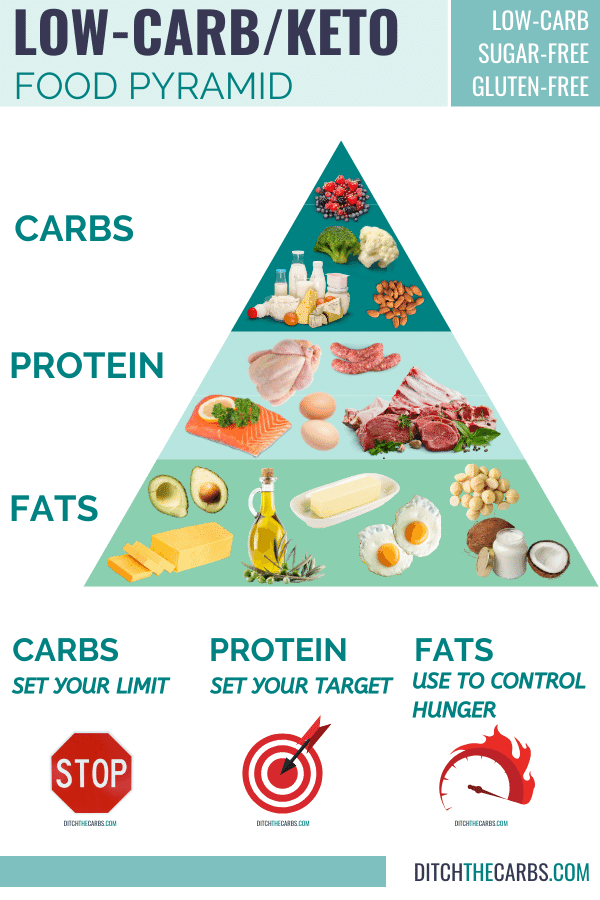
If you are new here, I suggest you read the low-carb keto diet FAQ and download your FREE diet sheet with easy meals and snacks for beginners.
Are you ready to lose weight and heal your body for life (without dieting, drugs, or making yourself miserable)?

Our free on-demand video training will walk you through how to make this THE year you set health goals…and keep them.
Is the current food pyramid healthy?
When thinking about a food pyramid, often the first thing that comes to mind is what we were taught in our younger schooling years.
The triangular-shaped diagram of food groups helped us to understand how many servings of each macro to eat for a healthy diet. But did you know that this traditional food pyramid is in fact set on a foundation of unhealthy and processed carbs?!
This leads to a life of chronic high blood sugars leading to insulin resistance.
And what’s the problem with insulin resistance? It lies at the centre of metabolic syndrome and many modern chronic diseases.
There are so many advantages to the low-carb diet such as improved metabolic health, improved weight loss, reduced appetite, improved concentration, reduced inflammation and even clearer ski and fewer wrinkles.
What is a keto food pyramid?
What’s the alternative then?
For those of us following a low-carb, high-fat meal plan like the ketogenic diet, the keto food pyramid is your go-to visual resource, vital to you maintaining your low-carb lifestyle.
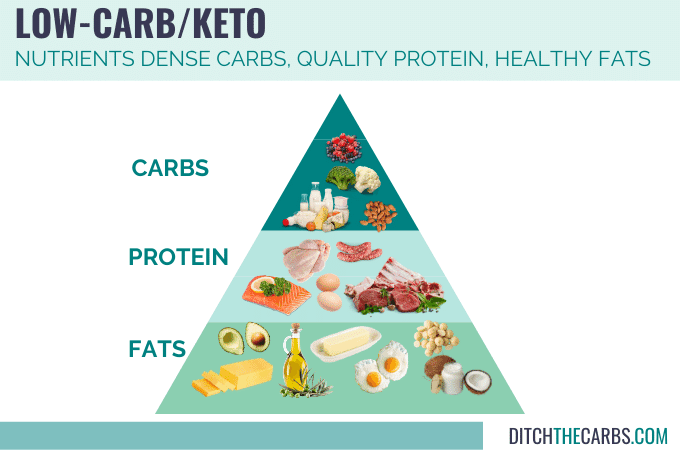
The Keto Food Pyramid Explained
If you have a look at my keto food pyramid, you’ll notice that healthy fats form the base of the pyramid structure followed by quality proteins and then nutrient-dense carbohydrates which are accountable for the smallest section.
If you are new to keto, you may be wondering why the food groups appear to be a complete flip from the traditional pyramid.
Without going into too much detail in today’s post, when following the keto diet, your goal is to reach a state of nutritional ketosis and then maintain that state which is the cause of efficient fat burning in your body.
This keto food pyramid diagram is designed to get your body into a state of nutritional ketosis and keep you there.
How to easily control your macros on a keto diet
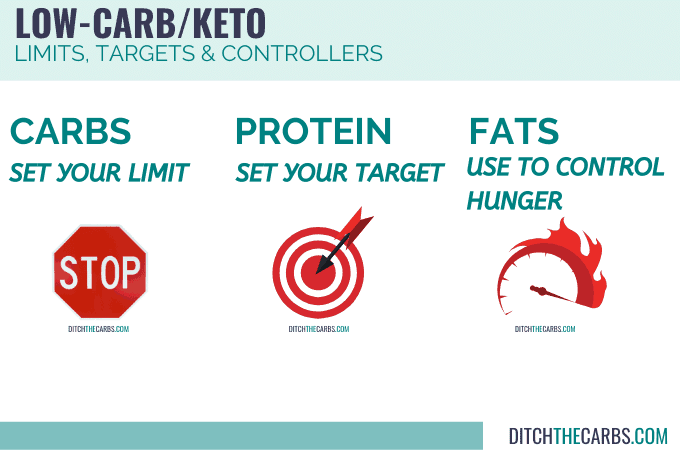
A simple way of recalling this structure and its correct application to your daily macro intake is to keep the following in mind: Carbs are a limit – protein is a target – use fat to adjust hunger (but not in excess).
Nutritional ketosis will occur when you eat very few carbs so your glycogen stores are depleted and your body has to look for an alternative fuel source – YOUR BODY FAT!
Once your body begins to burn fat, your body will create ketones and you are said to be in nutritional ketosis.
For a more in-depth explanation of the keto diet and how to start, check out these helpful resources of mine:
Now that you have a better understanding of the keto food pyramid as a whole, let’s dive deeper into each level of the keto pyramid so that you know those foods that you can enjoy and those that you need to avoid.
Healthy Fats & Oils
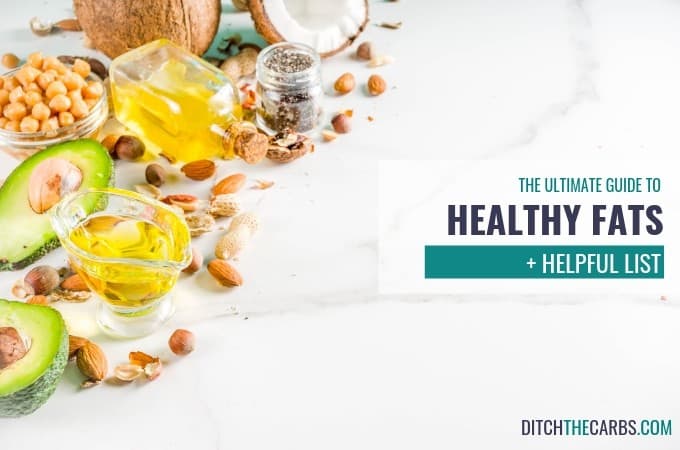
Approximately 70-80% of your daily calories should come from healthy fats which are therefore represented as the largest tier in the keto pyramid.
Keep in mind that foods contain a certain percentage of fat content i.e. full-fat dairy and fatty proteins such as tuna, salmon, mackerel, and fatty cuts of grass-fed meat which contribute towards the daily recommended fat intake when following a keto diet.
Important note: As a beginner, you will want to add plenty of healthy fats from the keto food pyramid to your meals to keep you fuller for longer, but as time progresses and your hunger diminishes, the additional fat will no longer come mainly from your food, but your body fat.

Some of the best sources of healthy fats and oils include:
- Ghee
- Grass-fed butter
- Tallow
- Lard
- Extra virgin olive oil
- Cod liver oil
- Coconut oil
- Avocado oil
- Macadamia oil
How to use a macro calculator to set your carbs, protein and fat
Using my FREE macro calculator will help you know how much protein you require each day.
You can set your daily carbs to a limit that is sustainable whilst still getting results and benefits.
You will see a fat calculation but this is a LIMIT, not a GOAL.
Healthy Protein Intake
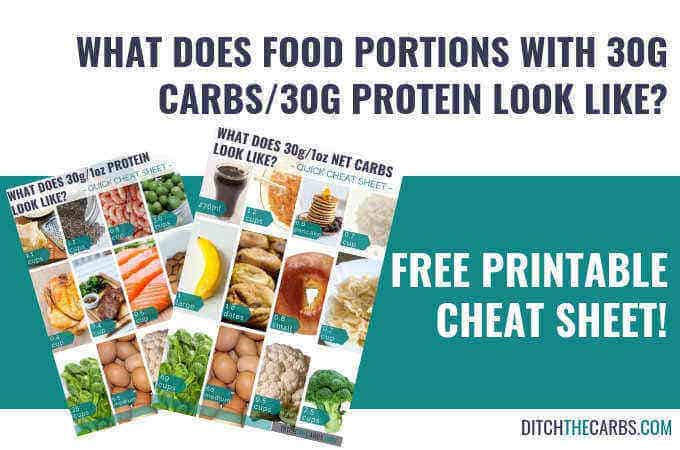
The keto food pyramid supports a moderate to a high protein content of your overall daily calories.
One of the most common mistakes that people make in the early stages of the keto diet is to restrict their protein too much in the fear of insulin levels required to process protein and/or gluconeogenesis (more on that in the articles mentioned above).
This misconception will not address your hunger and appetite and so may stall your progress which is why the emphasis is placed on hitting targets daily.
Sources of quality protein content while still balancing with plenty of fat include:
- Fatty fish i.e. tuna, salmon and mackerel
- Fatty cuts of red meat i.e. steak, lamb, pork, salami and pepperoni or organ meat
- Seafood i.e. shellfish, oysters and clams, mussels
- Eggs
- Vegetarians will rely more on high-protein nuts, seeds, full-fat dairy and certain vegetables for their protein
Although you shouldn’t shy away from fattier meats, they shouldn’t become your daily staple if you have hit a plateau.
On the other hand, super lean meats with high protein levels but little fat are more difficult to work into a normal keto diet meal plan.
A healthy balance with a daily target in mind is the way to go and will include a mix of fatty and lean cuts of meat. Depending on your goals/targets/limits.
Nutrient-Dense Carbs
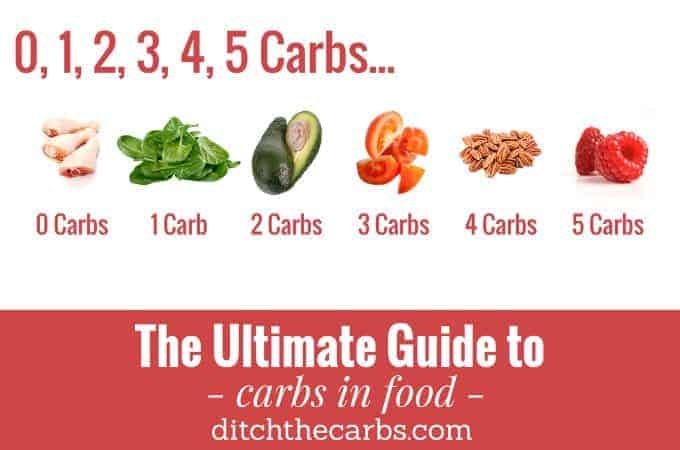
The smallest macronutrient on a keto diet is carbs. Nutrient-dense carbs.
With this said, you may very well find yourself paying more attention to them than the other macronutrients in order to ensure that you don’t go over the recommended 20g daily (for a simple keto diet) intake otherwise you won’t reach nutritional ketosis.
As carbs are such a small percentage of your daily intake, it’s important to avoid ALL high-carb vegetables (such as potatoes, corn and carrots) and rather include larger portions of non-starchy vegetables (like avocado, spinach and cauliflower) at every meal.
This way, you can get plenty of volume without sabotaging your macro limit.
You will in time discover and learn the carbs in foods, and you will learn how to read nutrition labels so you can spot hidden sugars.
Here are some of the best non-starchy vegetables to eat on a keto diet. They can be enjoyed in varying quantities depending on your carb limit and tolerance.
- Avocados (a staple of most keto diets!)
- Leafy greens, like spinach and kale
- Bell peppers
- Tomatoes
- Cauliflower
- Broccoli
- Asparagus
- Zucchini
- Eggplant
- Garlic
- Cayenne
- Celery
How to start a keto diet
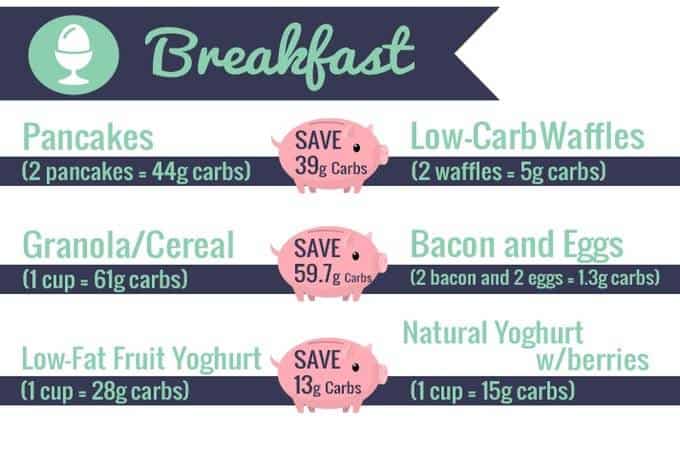
While it may seem daunting to have to reduce your carb intake to such an extent on the keto diet, you may be pleasantly surprised with these easy low-carb swaps, guaranteed to be enjoyed by the whole family!
Once you learn how to read food labels, and you know how to count carbs, you’ll have great success almost immediately.
There are quick and easy low-carb and keto cheat sheets you can follow. There are numerous charts in the post for breakfast, lunch, dinner, desserts, and drinks.
Start with one at a time and work your way down the lists.
Before you know it, your pantry will be transformed into a fully functioning low-carb machine!
Other Low-Carb Foods In The Keto Food Pyramid
Apart from the non-starchy vegetable options listed above, there are other low-carb food choices that you should gravitate towards when on the keto diet. These include:
- Certain nuts, and seeds that can be eaten in small amounts as snacks i.e. almonds, pecans, pili nuts, chia seeds, flaxseeds, and all full-fat dairy.
- Small quantities of low-sugar fruit i.e. blueberries, strawberries, coconut, lemons, limes, raspberries (which have less than 10 grams of net carbs in a 1-cup serving).
- Full cream dairy, full-fat cheeses, and of course – butter!
Foods excluded from the keto food pyramid
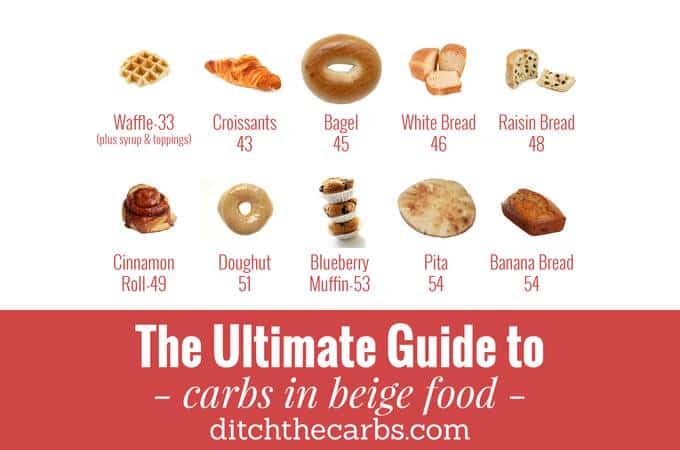
The keto food pyramid excludes food from the following food from your diet and it’s a good idea to become familiar with these types of foods to avoid undermining your goal of reaching ketosis.
Most of us who follow a keto diet avoid all beige food, wheat-based bland food, and starchy sugary food.
These include:
- Bread
- Pasta – high in carbs and almost no nutritional value
- ALL sugars (refined, organic, free trade or raw)
- Honey
- Fast food of any kind
- Beans
- Rice
- Condiments high in sugar
- Higher carb fruits, such as apples or bananas
- Starchy vegetables like corn, potatoes, and carrots
- Vegetable oils

The keto food pyramid is a great visual resource to refer back to, making it easy for you to understand what foods to eat and those to avoid while trying to reach and maintain a state of ketosis.
And to make it even easier for you during your next grocery run, get my meal plan below.
What if you could actually take control of
your health in just 10 days?
It’s not your fault you can’t lose weight as a woman over 40 even though you’ve likely tried literally everything. Your metabolism probably feels broken and your hormones are likely all out of whack.
But you can fix it all with ONE simple change: eliminate sugar. We make it super easy with daily lessons teaching you the science behind what makes us gain weight in our midlife and beyond! Are you ready to get started now?





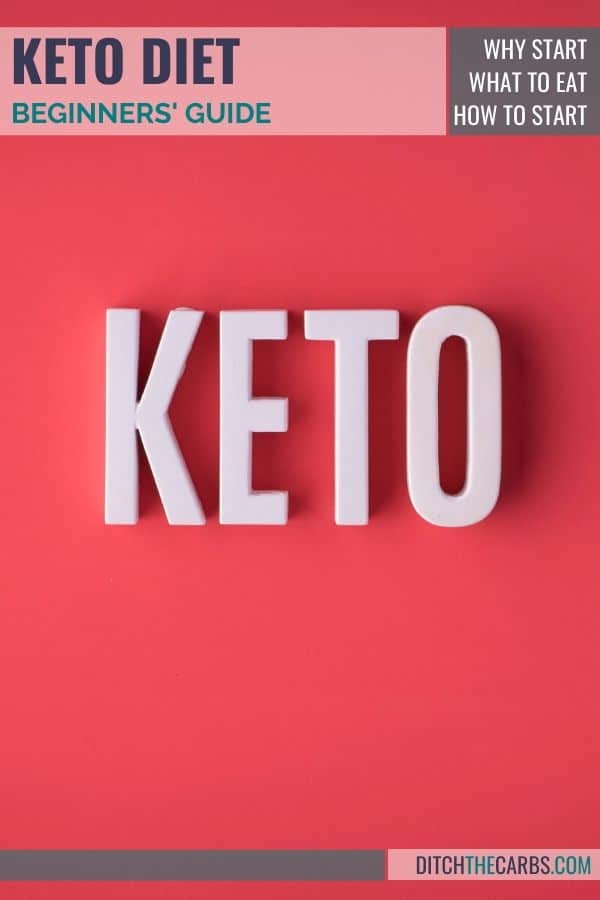
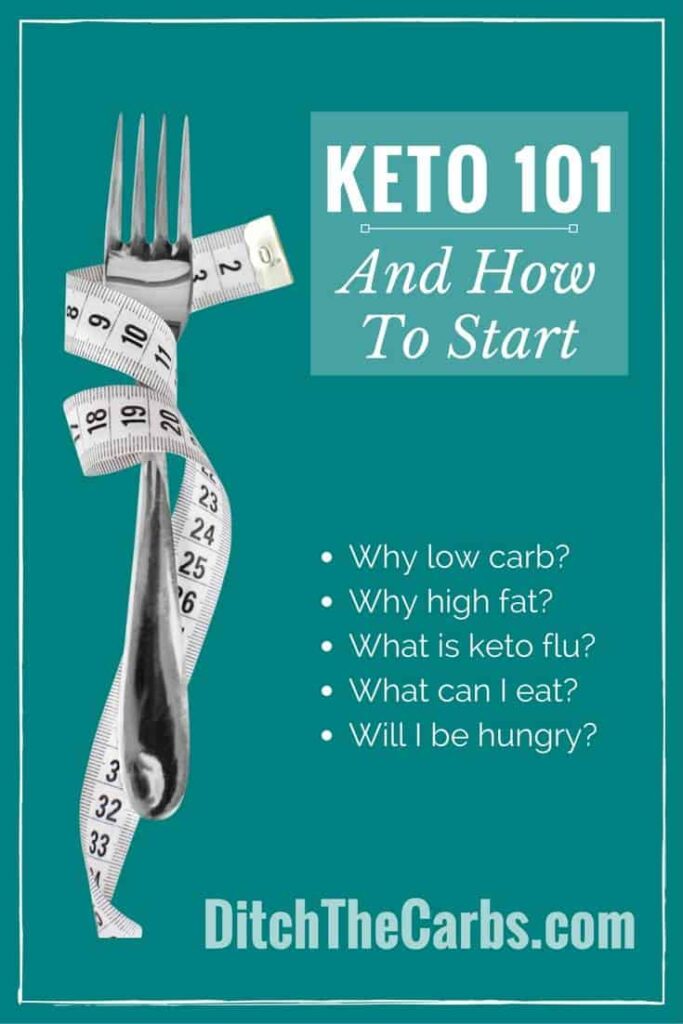
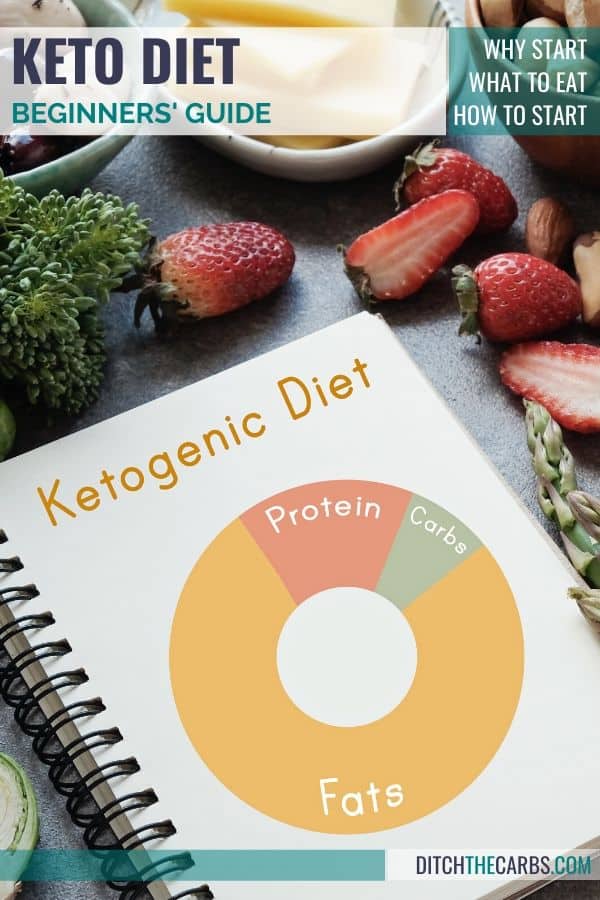
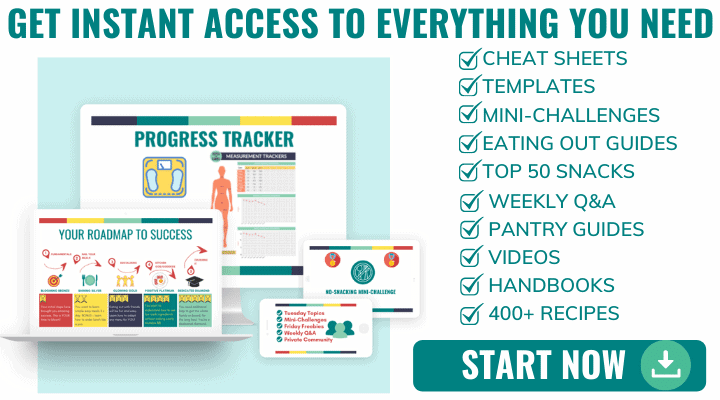







This is really a must read post on Keto Food Pyramid to start with basic knowledge of keto diet & lifestyle. Ditch the Carbs team strive for best efforts to deliver us the best guidance on how to use carbs for the best health benefits without fear of obesity and other side effects of many random FAD diets out there.